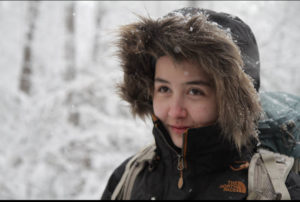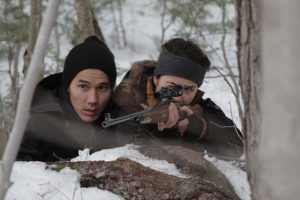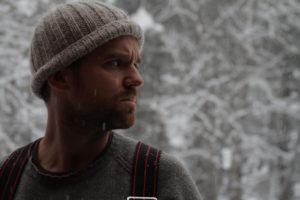Click on the tag “hope” at this bottom of this post to read about all of my suggestions for hopeful science fiction. If you have recommendations for future instalments of this series, I’d sure like to hear them. Leave a comment below or send me message about it on Twitter.
Earlier this year I discovered the Better Worlds series, a science fiction anthology of short stories and films about hope that was published at The Verge two years ago. This is the eighth story from this anthology I’ve covered here, and I will eventually blog about all of them.
Skin City
Kelly Robson’s Skin City was about a street performer named Kass who got into trouble after falling for a radical privacy devotee.
The futuristic world Kass lives in is set about 80 years in the future in a time when climate change has become strong enough to seriously damage cities. Toronto and any other city that wished to survive had long since erected domes over themselves to keep violent, seasonal storms from flattening their historic buildings.

They might have looked something like this but larger.
This naturally meant that humans were crammed into much smaller spaces than many folks know in 2020.
To compensate for constantly being surrounded by strangers, some wealthy people in this universe have decided to wear a sort of electronic helmet over their head when they leave home that digitally erase other people in their line of sight and hide the owner’s facial expressions from strangers, too.
The reason why people who wore visors would want to hide their facial expressions is something best discovered by new readers for themselves. It was explained thoroughly and satisfactorily.
I enjoyed reading about these sociological and technological changes. They seemed like things that could easily happen to future generations given what life is like in 2020. I’ve known some people who gave up on social media for privacy reasons and many others who are painstakingly careful about what they post there.
Given the right technology, I can see a lot of people opting out of being seen by others, especially if they’re living in a cramped city that no longer has the resources to give people much personal space at all.
As for Kass? She wasn’t one of those folks who were wealthy enough to afford a status symbol like that by any means. Her income barely covered the necessities, and she definitely wasn’t someone who was thought of highly by the authorities. In fact, when the audience first met her she was in jail and looking at the possibility of spending the rest of her life there. That’s the sort of detail that will keep me reading for sure!
The ending was well done, too. I would have liked to see more foreshadowing done for it so that readers would have a hint of what was to come when the earlier scenes continued to grow bleaker, but I enjoyed the twist when it was finally revealed. Honestly, it was the only logical outcome of everything that had been established about Kass and her society earlier on.
Now I know you’re all wondering how a story about a character who was incarcerated and deeply in love with someone who ordinarily would never interact with her could possibly be hopeful.
There was a time right before the final scene when I was tempted to stop reading. It didn’t seem possible for there to be a cheerful ending when Kass had so many things stacked against her pursuit of happiness.
The beautiful thing about the Better Worlds series is that it doesn’t require perfection from its characters, settings, or plot twists. In fact, some of the best stories in this online anthology so far have come from the most unlikely places in my opinion.
While this wasn’t my favourite story in this collection, it was a solid one.

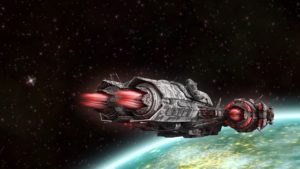 Karin Lowachee’s
Karin Lowachee’s  Peter Tieryas’
Peter Tieryas’  In Rivers Solomon’s
In Rivers Solomon’s  Cadwell Turnbull’s “
Cadwell Turnbull’s “ John Scalzi’s “
John Scalzi’s “ Leigh Alexander’s “
Leigh Alexander’s “
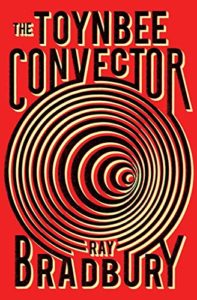 “The Toynbee Convector” is a
“The Toynbee Convector” is a  The first thing that impressed me about this short story was that it existed in our universe, warts and all. This wasn’t an episode of Star Trek….although Star Trek would be an interesting choice for a future Hopeful Science Fiction post!
The first thing that impressed me about this short story was that it existed in our universe, warts and all. This wasn’t an episode of Star Trek….although Star Trek would be an interesting choice for a future Hopeful Science Fiction post! The importance of hope was of the recurring themes in Roger and Craig’s interview, and it was the second thing that made me think this would be the perfect addition to this series.
The importance of hope was of the recurring themes in Roger and Craig’s interview, and it was the second thing that made me think this would be the perfect addition to this series. Not everyone necessarily has the same opportunities in life, but we all have choices.
Not everyone necessarily has the same opportunities in life, but we all have choices.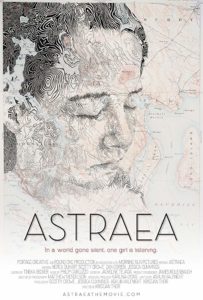 Astraea is a 2016 film that is set in a slightly futuristic version of what used to be the United States. The main character, Astraea, is a young girl living in what’s left of human society after an epidemic killed off a huge percentage of the population. She’s convinced that their brother and grandmother are still alive, and tries to convince her older half-brother, Matthew, to travel around North America in search of them.
Astraea is a 2016 film that is set in a slightly futuristic version of what used to be the United States. The main character, Astraea, is a young girl living in what’s left of human society after an epidemic killed off a huge percentage of the population. She’s convinced that their brother and grandmother are still alive, and tries to convince her older half-brother, Matthew, to travel around North America in search of them.